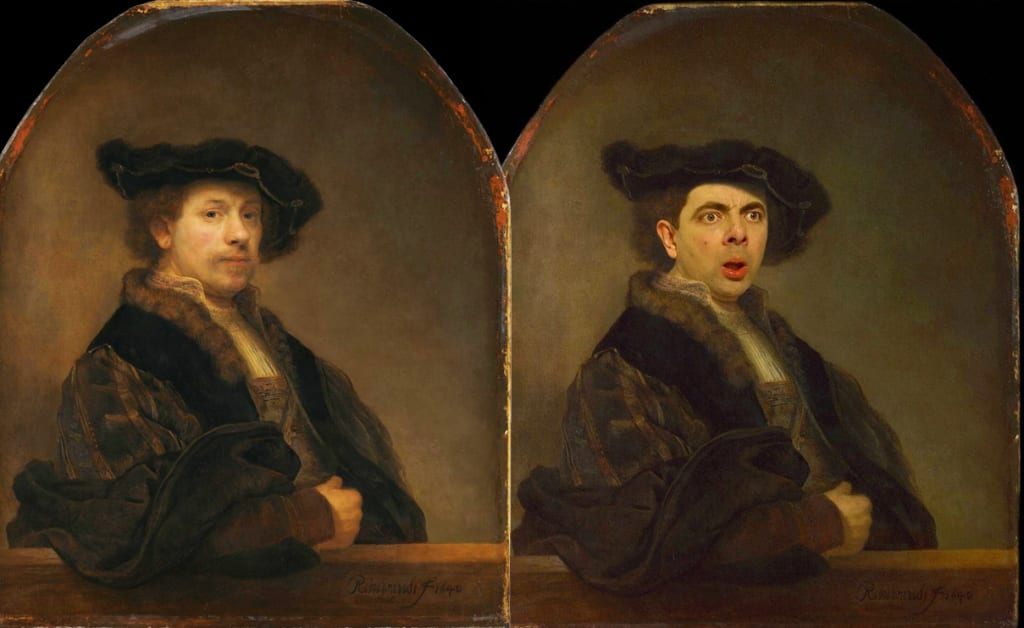SEVEN NOTES FOR UNLOCKING CREATIVITY IN THE WORKPLACE.
WHY CREATIVE TEAMS WORK BETTER THAN ALL-STAR INDIVIDUALS.

The times when I’ve felt most alive in my business were those when we generated a creative buzz, when everyone was excited about an idea. That idea carried with it an aura, enthusiasm and its own momentum. It was always infectious and left everyone with a positive attitude. These were bonding moments that made work into play.
There is something very powerful about everyone coming together around a common goal, where you all become a team, all heading in the same direction.
We were fortunate, we worked in a business, designing hotels, spas and residences, that had creativity and collaboration at its heart. Teamwork is essential in the design process and teams work best when they are united by a common, shared goal. It’s a very empowering feeling.

Few employers would disagree that creativity and flexibility are two of the critical attributes of a successful company. Yet, the culture of most companies doesn't encourage creativity in the workplace. Creativity can be disruptive and upset hierarchies, and this is often in conflict with corporate values. Unless a creative attitude is the glue that binds the structure and sets the goals.
According to an extensive study carried out by I.B.M. in sixty countries and thirty-three different industries, C.E.O.s surveyed believe that succeeding in a volatile, uncertain, complex and ambiguous (see my blog V.U.C.A.) world will require creativity and agility to survive and thrive.
Employees surveyed said that upper management rarely encouraged creative and flexible thinking, particularly if it might upset or disrupt existing ways of doing things.
Creative thinking and systems thinking are not necessarily incompatible. It's just a question of finding the right balance between the two and thinking a little differently. The culture needs to incorporate a system of creativity that allows for disruptive thinking.
Shifts in government regulation (including Brexit), the pandemic, changes in economic power centres, growing data volumes, rapid industry transformation, evolving customer desires and purchasing behaviour, global issues, sustainability issues, all converge to disrupt conventional markets.
The World Economic Forum has put creativity in the workplace as one of their top three skills for thriving in the future. Admittedly, this was published before COVID, but the principle remains; creativity in the workplace is a key differentiator.
More than 60 per cent of C.E.O.s surveyed said that industry transformation was the critical factor. New, innovative ways of managing organisations, structure, culture, people, strategy, and finance would be necessary for managing complexity.
We have to be "Change Animals," said Michele McKenzie, President and C.E.O. of the Canadian Tourism Commission. "this will require a great deal of creativity as we reinvent ourselves to thrive in the new economy".
The interconnectedness of infrastructures and relationships is a significant factor in the growing complexity of globalisation.
The I.B.M. study highlights some of the top attributes of successful organisations based on revenue and profit. Top performers are:
- More likely to make rapid decisions.
- More likely to get closer to their customers, using all media.
- More likely to see the explosion of data flows as opportunities, not threats.
- Those that have more creativity and operating dexterity.

REGIONAL DIFFERENCES
There are, of course, different perspectives from different regions amongst successful organisations.
For instance, in Canada, people-skills (I understand this to mean emotional intelligence) were considered one of the most critical factors.
In China, new generations of creative, visionary and international leaders were seen as necessary to fulfil China's global ambitions. Sixty-one per cent felt that "global thinking" was the top leadership quality.
In the U.S.A., the prime concern was with "big government", where they saw more government intervention as further compounding complexity.
In Japan, their primary concern was with rapidly changing markets from mature to emergent markets. In Europe, this was not a concern.
The I.B.M. study indicates that organisations face rapidly changing environments and that agility and creativity are the must-have tools to adapt to these new environments.
Michele Roberto, in his book "Unlocking Creativity", suggests that the solution is to change mindsets from linear mindsets to what Carol Dweck calls growth mindsets.
A growth mindset embraces challenge and views error and failure as learning and growth opportunities. A fixed, linear mindset will usually avoid challenge and will place "talent" above effort.
An all-star casts of players, can crush team spirit and creativity, it is better to encourage teams to adopt changing mindsets, shifting them to growth and resetting company culture accordingly. Successful sports teams have taken this to heart with phenomenal results.
We all need motivation, no matter how talented we are. Elite athletes still need their pep talk before they go on to compete. Just talent and training are not enough, they need the right mindset and the right attitude to compete at the highest level.

In his book "Legacy", James Kerr analyses the New Zealand All Blacks (the most successful rugby team of al time) and quotes that no one is more important than the team. "never be too big to do the small things that need to be done…Sweep the sheds". The [creative] culture of the organisation is more critical than an individual.
This might seem to run counter to the premise of individual mindset and creativity. Still, Kerr suggests that a constantly changing culture based on authentic values and stories allows for creativity in the workplace.
Seven Notes on creativity in the workplace.
(After Michael Roberto).

1. PSYCHOLOGICAL SAFETY.
A PLACE OF SAFETY AND NON-JUDGEMENT.
Recent studies carried out by Google found that psychological safety within a company is more important than the company structure for productivity.
Most companies treat the structure as a silver bullet; if you get the structure right, you optimise work patterns. However, the truth is not so straightforward.
A 2012 study published in Psychological Science referred to the fact that structure is task-dependent. The study divided the participants into three groups. The first two groups were egalitarian. The first was made up of "high-power" people, and the second was made up of "low-power" people. The third group was structured into a hierarchy with a range of people from High to low power.
All three groups performed similarly on tasks that required no interdependent coordination. In a task where they were much more interdependent, the group with the hierarchical structure performed best. It showed that when people need to coordinate actions for a task, a hierarchy works best. However, when less interdependent coordination is required, a flat structure works just fine.
Structures do not necessarily boost creativity or performance in all situations. It turns out also that it's not about employing star performers either.
When Julia Rozovsky of Google tried to establish what qualities differentiated the highest performing teams from the less well-performing. What she found was that one of the key performance qualities was psychological safety.
When team members feel psychologically safe and are allowed to speak their minds without reprimand [or judgement], and are allowed to fail and take risks, they thrived.
If we assume that creativity is a natural human trait, then all you need to do is create an environment where people feel safe and secure and adopt a growth mindset.

2. AN ITERATIVE APPROACH.
PERFECTIONISM HOLDS BACK PROGRESS.
One of the main obstacles to creative progress is perfectionism.
Whilst we all want to do things as well as we possibly can. When we try to achieve perfection, we inevitably fall short or fail to complete it. Perfect plans don't really exist; something constantly changes and develops, usually time and our perspectives. Whilst we strive for perfection, we also have to accept that it is an iterative process of continuous improvement.
In an experiment carried out in a London art college in the 1960s, pottery students were divided into two groups. The first group was told to produce as much work as they could possibly achieve in one week. The second group were told to produce the best (most perfect piece) they could in a week. Both groups went away to produce their pieces and returned at the end of the week. The group who had strived for perfection had produced very little work, which was of poor quality. The group that had been asked to produce as much as possible had produced higher quality work and in greater volumes.
Skype set up an experiment to see how different people would deal with a simple creative problem. They recruited some of their existing staff and some six-year-olds and gave them a task to build the highest self-supporting tower with twenty pieces of spaghetti, some tape, and it had to have a marshmallow on the top.
They found that the six-year-olds performed better and built higher towers than the adults because they weren't afraid to experiment and get things wrong first and learn from the many iterations of the task.
The lesson from this is to use an iterative approach. Build prototypes to see what happens, then test and rebuild.
Growth mindsets are more willing to embrace challenges than fixed mindsets. An iterative approach yields far more if the attitude is focused on learning.

3. AVOID BENCHMARKING.
BE LESS LIKE THE COMPETITION.
Most businesses observe other companies and then decide; “if it works for them, it will work for us”. They start with imitation without the foundational philosophy that has driven the original company to create a product or service consistent with their culture.
This is something I've seen a lot in hotel brands.
A hotel operator or entrepreneur will open a new concept brand, and very soon afterwards, other major operators will imitate that concept, but to a lesser degree. Without the creativity, philosophy and the culture behind the brand, the imitative brand will remain an empty shell. This notably happens when Ian Schrager broke the mould with his Philippe Stark designed Boutique Hotels. And similarly, when the Citizen M brand arrived, many major brands "imitated" Citizen M's spirit, but without the soul.
Focus groups can tell you what the market wants or what it's pain-points are, but they can't tell you what they might want if they don't yet know. According to Michael Roberto, companies need to bolster their own unique strengths and find their own niche.

4. COMPETING COMMITMENTS.
One of the key reasons employees find change so difficult, According to Robert Kegan and Lisa Laskow Lahey in their article "The Real Reason People Won't Change", published in the Harvard Business Review, is something called Competing Commitments.
Most people harbour a subconscious hidden goal, of which they may not be fully aware. This competing commitment may even undermine the employee's stated intention and perhaps even their own desire to get ahead.
In an example given in the article, Helen was a rising star in a manufacturing company and was tasked with speeding up the production process. She kept missing the deadline and hadn't filed any reports. Whilst she was highly committed to the task, she nevertheless kept falling behind. After extensive self-examination, Helen realised that she also had an unacknowledged commitment to remaining subordinate to her manager whilst she wanted to progress and succeed. She didn't want their relationship to change, and she was subconsciously frightened that she wouldn't be up to the task if she succeeded.
The difficulty with competing commitments, I think, is first; the difficulty of uncovering a subconscious, conflicting need (and would I want a manager/boss to intrude to that extent?) and second, deciding whether to accept the consequences of that discovery.
If there is an atmosphere of psychological safety and openness, then competing commitments can be discussed in a non-judgemental environment.

5. DON'T BE TOO PREDICTIVE.
STEER CLEAR OF A PREDICTION MINDSET BY PRIORITISING PRODUCT QUALITY IN THE HERE AND NOW.
With most new products, the developers will have to produce a profit forecast, which positions them in an awkward place. If they haven't pitched it high enough, they may not succeed in getting backing or funding. If it's pitched too high, they will be at risk of not achieving the target and being closed down.
Most profit forecasts are overblown and unrealistic. Very few companies hit their profit targets (although admittedly, some exceed theirs too).
Ideas need time to come to fruition, and we tend to overstate our predictions. It's better to focus on quality ad integrity.

6. A FOCUS MINDSET.
Focusing on a single problem produces the best results. Focusing on a single issue without distractions has been shown to produce far better results. However, too much focus can produce burnout.
Googles Jan Knapp organised what was called a "creativity sprint", where employees got together for five days to focus on just one problem. The idea was to get people away from distractions.
Distractions are the bane of modern life, yet we often crave them to entertain ourselves and still feel that we are doing something productive.
Too much focus, and the creative batteries run dry. We need to rechange by focusing on something else, but we need to do this most productively.
In the summer of 1876, Mark Twain wrote the whole of the Adventures of Huckleberry Finn. Then he put it down; it was getting too complex. Twain worked on other projects in the meantime. Then, seven years later, he returned to the book and completed it. So, rather than intensifying his effort at the first sitting, he put it aside, focused on other projects, and then returned to it years later to create the masterpiece that it is.
More focus is not always the solution. Sometimes it's better to set a project aside and gently allow the mind to work on it subconsciously in the background and return to it refreshed.

7. NAYSAYERS.
We are all prompted nowadays to leave reviews and feedback. This creates a culture of critique.
In colleges and universities, students are encouraged to use critical thinking, which encourages identifying weak points in the work of others rather than developing their own ideas. This is often mistaken for intelligence. So, rather than becoming creators, we are encouraged to be faultfinders and critics.
This is the Naysayer's mindset. It's not that we don't need a devil's advocate. In teams, this often hampers people bringing many different perspectives and can kill creativity.
Nevertheless, Naysayer's are an essential element within a team. It's often crucial to specifically have someone take on that role so that teams don't get caught in group-think. Naysayers should propose questions that provoke creative solutions. Some governments specifically allocate someone to take on the role of Naysayer so that a different perspective can be brought to the discussions.
What is clear is that creativity is a skill that plays an essential role in the health and wealth of organisations. In a complex world, organisations often discourage risk-taking whilst encouraging creative thinking. Rick-taking and creativity are inextricably linked. Creative thinking is, by its very nature, provocative and disruptive. If we want to encourage creative thinking in the workplace, we have to create an environment where people feel safe enough to speak their minds.






Comments
There are no comments for this story
Be the first to respond and start the conversation.